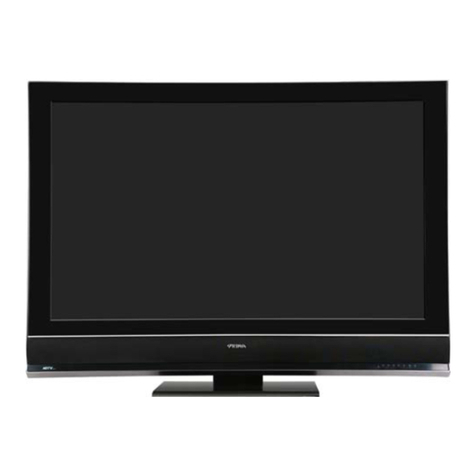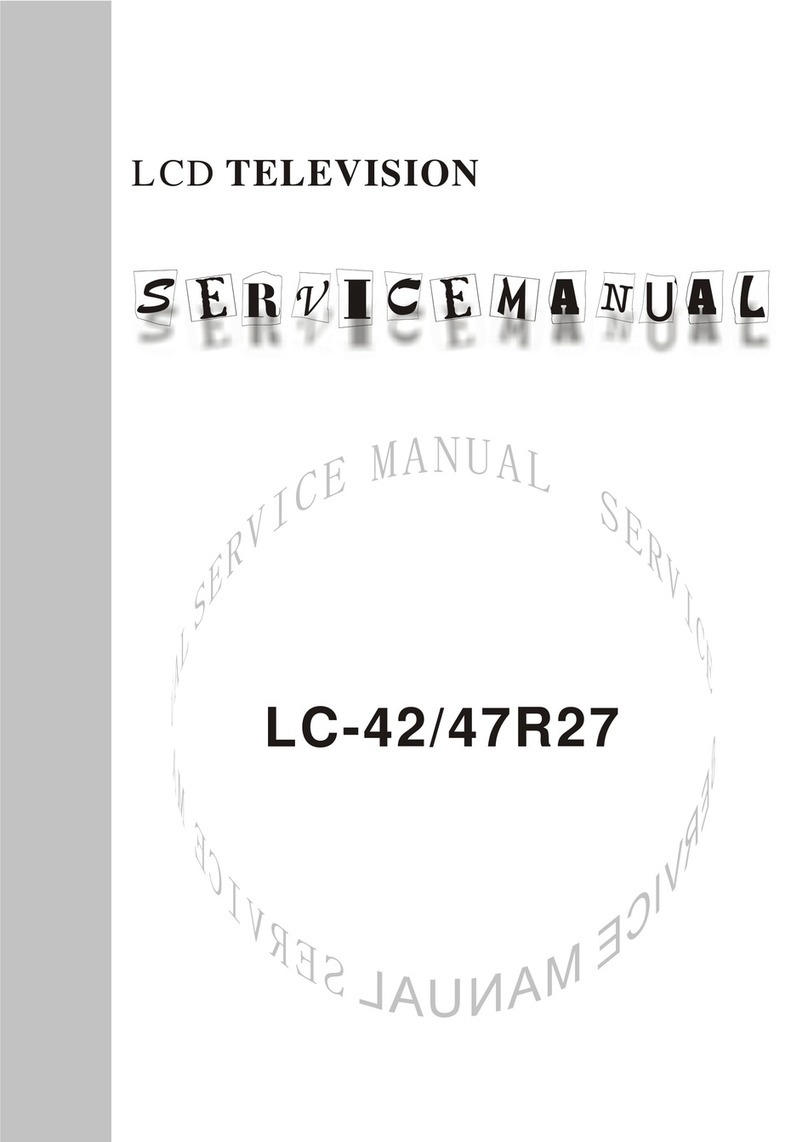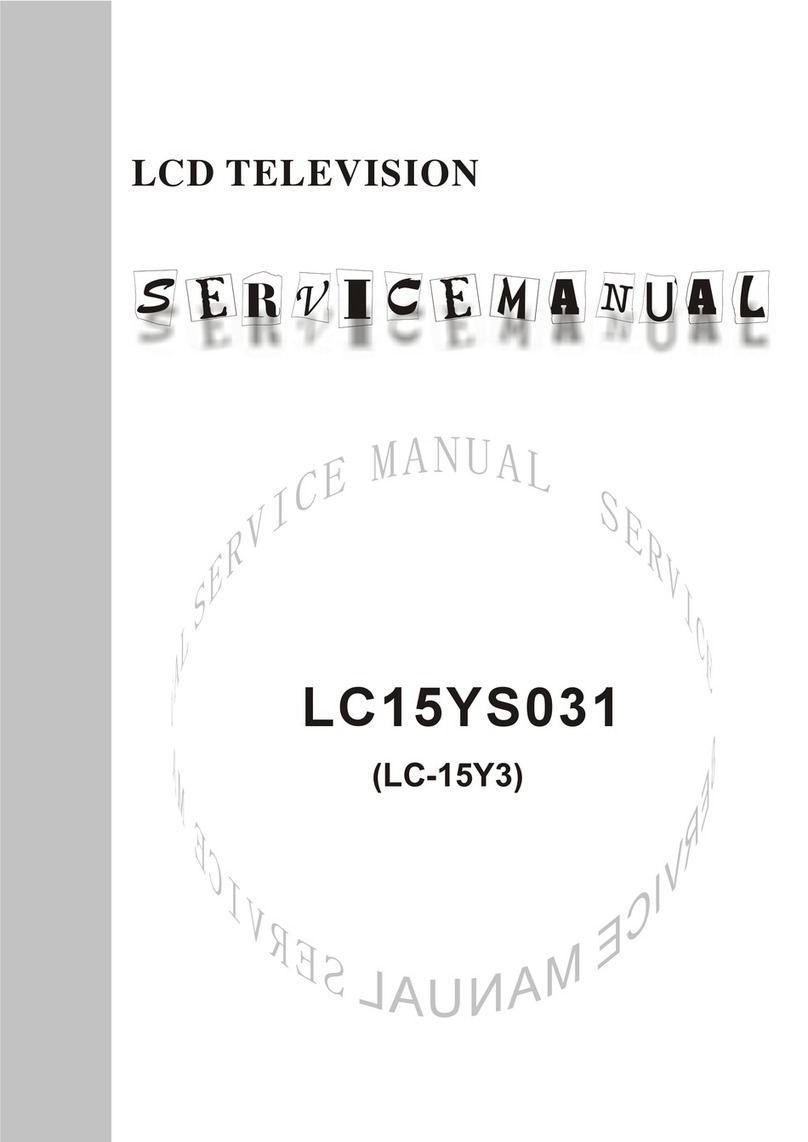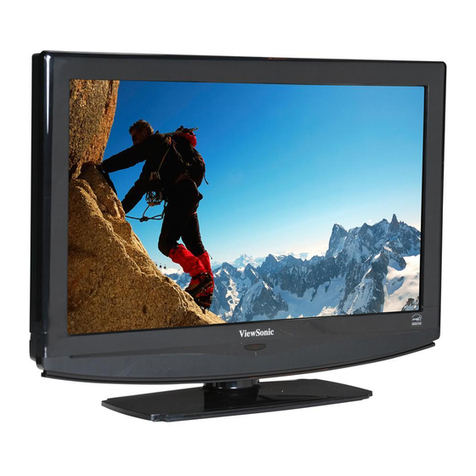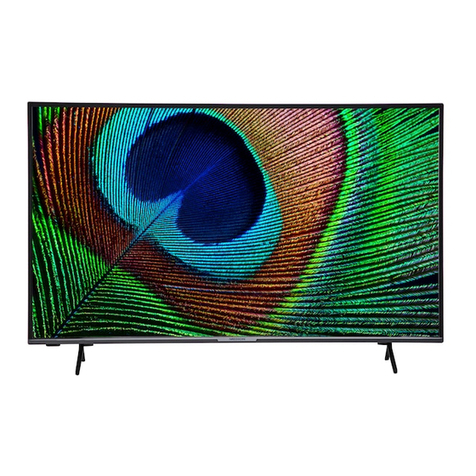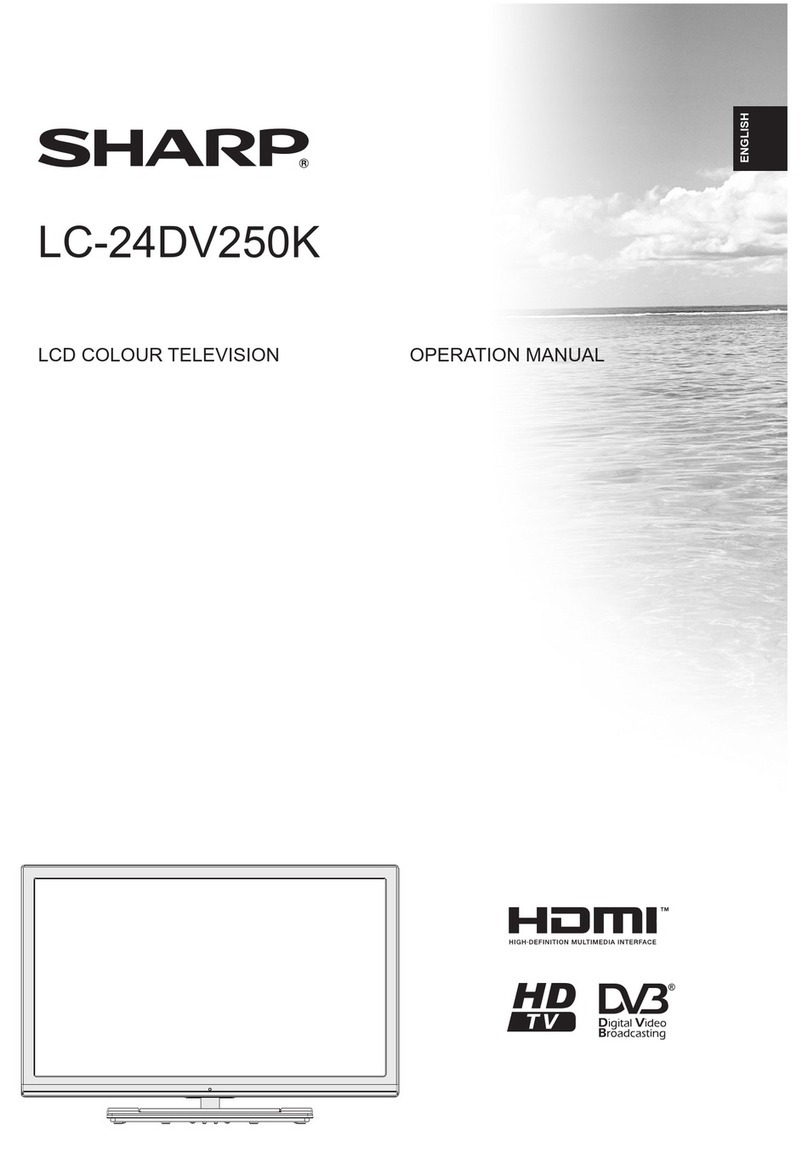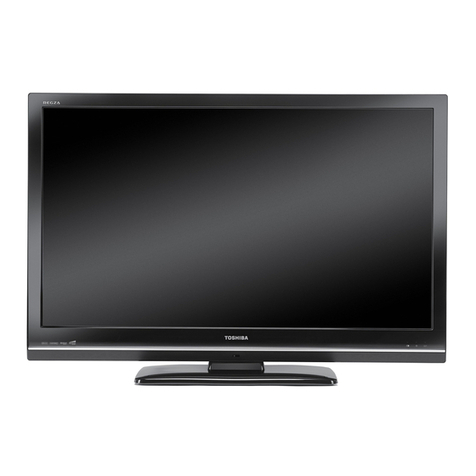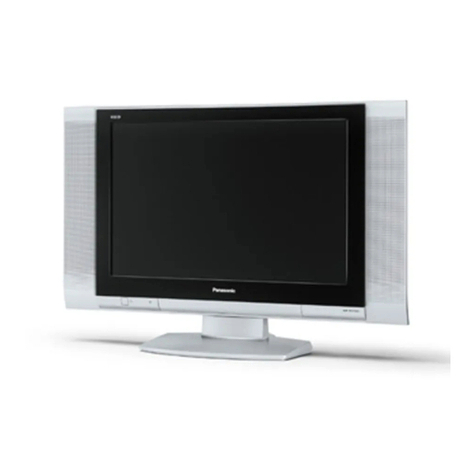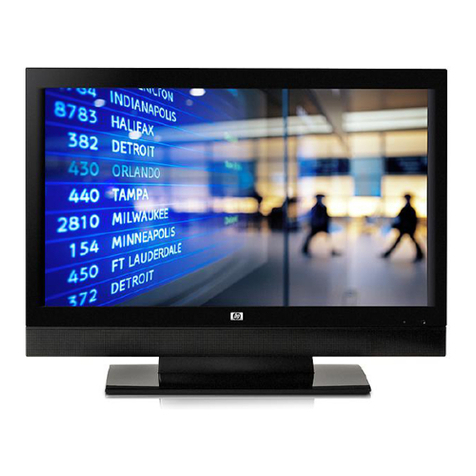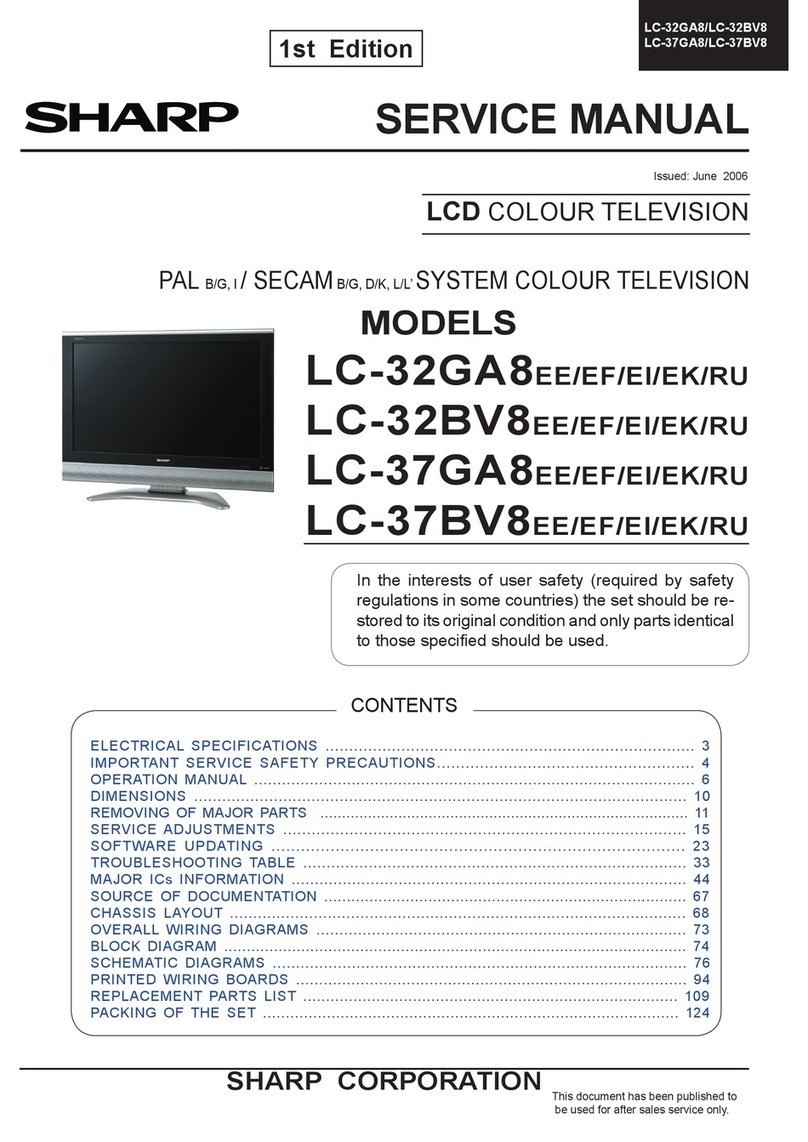
5
4.4 White balance adjustment
4.4.1 white balance adjustment of HDMI
a. Input VG-849 signal from HDMI: TIMING854 (800* 600/60Hz) and eighth-level gray scale
signal of PAT920. Use color analyzer CA210 to adjust white balance.
b. Enter submenu of COLOR TEMP, Select 9300k of color temperature
c. Fixed value of B OFF, adjust R OFF and G OFF, let the color coordinate of the second level
be (285, 293) and the brightness be about 3nit-6nit. Fixed value of B GAIN, adjust R GAIN and G
GAIN, let the color coordinate of the seventh level be (285, 293). Adjustment R OFF, GOFF, R GAIN
and G GAIN repeatedly until the value of the two levels gray-scale are (285, 293).
4.4.2 VGA/YPBPR/AV white balance check and correct
a. Input VG-848 signal of VGA to VGA terminal: TIMING854(800*600/60Hz) (PATIERN:CROSS)
and auto adjust to full screen, then input PAT948 black/white signal, enter factory menu ADC ADJ,
select AUTOTUNE and wait for OK display. Input PAT920(8 gray levels), check if the white balance
is normal, if not, enter COLOR TEMP menu and set ALL COLOR to 0 and fine adjust according the
method of 4.4.1c)
b. Connect VG-848 signal of YPBPR to YPBPR terminal and input TIMING972(1080i/60HZ)
100% color bar of PAT976(include black/white bars), Enter ADC ADJ submenu, select AUTOTUNE
and wait for OK display. Input PAT920(8 gray levels), check if the white balance is normal, if not, set
ALL COLOR to 0 and fine adjust according the method of 4.4.1c)
c. Input AV signal (PM5518, 8 gray levels, NTSC) to VIDEO1 terminal, check if the white
balance is normal, if not, set ALL COLOR to 0 and fine adjust according the method of 4.4.1c)
Note: it can’t set back to 1 once ALL COLOR changes to 0.
5. Performance check
5.1 TV function
Enter searching menu →auto search, connect RF-TV terminal with central signal source and check
if the picture is normal, if there are channels be skipped. Check TXT and parental control.
5.2 AV, YPbPr terminals
Input AV/S, YPbPr/YCbCr HD signal, check if it is normal.
5.3 VGA terminal
Insert VGA terminal, input VGA format signal of 640X480@60 Hz and check if the display is normal.
5.4 check sound channel
Check the speaker of each channel.
5.5 other function check
Check the turn on/turn off timer, asleep timer, picture/sound mode, OSD, freeze/mute, stereo, etc.
5.6 presetting before ex-factory
Item Setting Item Setting Item Setting
PICTURE MODE STANDARD BALANCE 50 OSD LANGUAGE English
COLOR MODE NORMAL VOLUME 50 OSD HPOSITION 50
NR WEAK SLEEP TIMER OFF OSD VPOSITION 50
ZOOM FULL TTX LANGUAGE WEST OSD HALFTONE 50
SOUND MODE STANDARD BLUE SCREEN OFF OSD DURATION 15
AVC OFF WSS OFF
